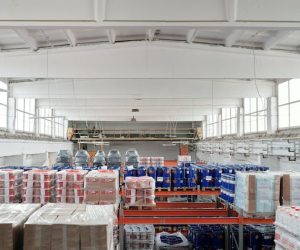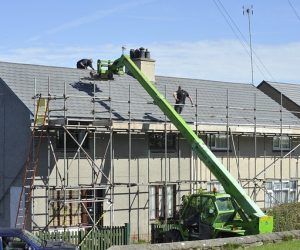In recent years, metal buildings have surged in popularity, becoming a preferred choice for a wide range of applications, from commercial warehouses to personal garages. This increasing trend can be attributed to a myriad of advantages that metal constructions offer over traditional building materials. With benefits spanning from durability and sustainability to flexibility in design and cost-effectiveness, metal buildings cater to both the practical and aesthetic requirements of modern architecture. In this article, we explore the top six reasons behind the growing favoritism towards metal buildings, shedding light on why they might be the ideal choice for your next construction project.
1. Durability and Low Maintenance
Metal buildings are highly respected for their exceptional durability and resistance to a variety of extreme weather conditions. Whether facing heavy rain, strong winds, or snow, these structures built with materials like steel exhibit inherent strength that allows them to endure the test of time with minimal wear and tear. Unlike wood, which is vulnerable to issues like termite infestation, rot, and mold, metal remains resilient, significantly reducing the maintenance demands and extending the lifespan of the building considerably.
2. Cost-Effectiveness
One of the primary reasons driving the widespread preference for metal buildings is their remarkable cost-effectiveness. To truly understand the value metal buildings offer, it’s advisable to consult a comprehensive guide to metal building prices that takes into account all factors, such as materials, labor, and additional costs. The construction process involved in erecting a metal building is typically swifter and requires less labor compared to traditional building methods. This efficiency not only leads to lower construction expenses but also underlines the long-term financial benefits associated with metal structures. Their longevity and minimal maintenance requirements further enhance their overall cost efficiency, making them a practical and financially viable choice for many individuals and businesses alike.
3. Sustainability and Eco-Friendliness
In today’s world, characterized by a growing focus on environmental sustainability, the eco-friendly nature of metal buildings plays a crucial role in their increasing popularity. Metals, particularly steel, are known for their high recyclability, enabling them to be reused without compromising their properties. This sustainable practice helps reduce the necessity for new raw materials, consequently minimizing the environmental impact. Moreover, the energy-efficient qualities of metal buildings, especially when equipped with effective insulation, can lead to substantial reductions in heating and cooling costs, promoting a greener and more sustainable future for all.
4. Architectural Flexibility
The versatility of metal buildings stands out, offering unparalleled adaptability to a diverse range of architectural styles and applications. Thanks to advancements in metal construction technology, architects and designers now enjoy greater freedom to explore innovative designs that were previously challenging to achieve using traditional materials. From expansive, open-plan interiors to intricate facades, metal buildings provide the flexibility required to realize bold architectural visions and bring them to life in a tangible and inspiring manner.
5. Enhanced Safety
Safety is a paramount consideration in any construction endeavor, and metal buildings excel in this aspect. Being non-combustible, metal does not contribute to the rapid spread of fire, providing an additional layer of safety for occupants within the structure. Moreover, the robust structure of metal buildings offers superior protection against various natural disasters, including earthquakes, hurricanes, and tornadoes, making them a preferred choice for regions prone to such calamities.
6. Quick and Easy Assembly
The prefabricated nature of metal buildings plays a pivotal role in streamlining construction processes and shortening project timelines significantly. By fabricating and assembling components off-site in a controlled environment, precision and quality are ensured, leading to efficient on-site assembly. This rapid assembly method often allows components to be put together swiftly, sometimes within a matter of days or weeks, depending on the project’s scale. Not only does this approach reduce labor expenses, but it also enables businesses and individuals to utilize their structures promptly, offering a definitive advantage in today’s fast-paced environment.

The multifaceted advantages of metal buildings, spanning from their enduring durability and cost-efficiency to their eco-friendly attributes and architectural flexibility, clearly demonstrate why they have become a dominant force in today’s construction landscape. Whether for commercial, industrial, or personal use, the benefits metal buildings offer to align perfectly with the contemporary demands for sustainability, safety, and design innovation. As society continues to evolve with a keen eye on environmental responsibility and technological advancement, the role of metal buildings in shaping our built environment is poised to expand even further. Their adaptability to various needs and conditions not only makes them a practical choice but also a forward-thinking one, marking a significant stride towards the future of construction.



